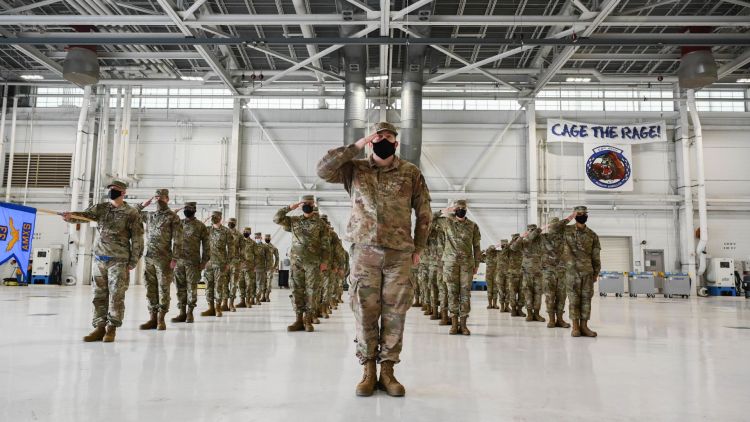The numbers are in, and they’re concerning—suicide rates within the United States military are still on the rise despite years of efforts to prevent this tragic outcome.
According to the Department of Defense’s (DoD) Annual Suicide Report, issued on Thursday, the calendar year (CY) 2023 saw a modest increase in suicides across all services, with the Army and Air Force experiencing particularly worrying rises.
While the Navy had a slight decrease in CY 2022, CY 2023 saw its highest suicide rate since CY 2019, and the Marine Corps continues to bear the highest rate overall.
Suicide Rate in the Military
In CY 2023, the military lost 523 service members to suicide, up from 493 the year before. This figure is even more alarming when you break it down by branch.
The Army and Air Force were hit hardest, with suicides in those branches rising significantly.
For the Army, this spike is especially concerning, as it follows years of increased rates that show no signs of slowing down.
The Navy, too, experienced an increase in suicides, bringing the rate to 21 per 100,000 sailors—marking the highest it’s been since CY 2019.
Meanwhile, the Marine Corps, which has consistently had the highest suicide rate in recent years, saw a slight drop, but it remains at a staggeringly high rate of 35.9 per 100,000.
The numbers are in, and they’re concerning—suicide rates within the United States military are still on the rise despite years of efforts to prevent this tragic outcome.
According to the Department of Defense’s (DoD) Annual Suicide Report, issued on Thursday, the calendar year (CY) 2023 saw a modest increase in suicides across all services, with the Army and Air Force experiencing particularly worrying rises.
While the Navy had a slight decrease in CY 2022, CY 2023 saw its highest suicide rate since CY 2019, and the Marine Corps continues to bear the highest rate overall.
Suicide Rate in the Military
In CY 2023, the military lost 523 service members to suicide, up from 493 the year before. This figure is even more alarming when you break it down by branch.
The Army and Air Force were hit hardest, with suicides in those branches rising significantly.
For the Army, this spike is especially concerning, as it follows years of increased rates that show no signs of slowing down.
The Navy, too, experienced an increase in suicides, bringing the rate to 21 per 100,000 sailors—marking the highest it’s been since CY 2019.
Meanwhile, the Marine Corps, which has consistently had the highest suicide rate in recent years, saw a slight drop, but it remains at a staggeringly high rate of 35.9 per 100,000.

It’s highly important to note that these numbers aren’t just statistics—they represent real people, real lives lost, and families affected.
The military’s youth demographic—primarily young, male enlisted members—makes up the bulk of these tragic deaths.
Most of these suicides involve firearms, raising concerns over gun safety within military communities.
It’s clear that, despite efforts, the rising numbers point to deeper issues that need to be addressed with urgency and new strategies.
The Pentagon’s Response
The Pentagon has acknowledged the severity of this issue. Defense Secretary Lloyd Austin has made it clear that suicide prevention is a top priority.
The DoD has launched several initiatives over the years to support mental health, including expanding counseling services and promoting gun safety measures.
However, the real impact of these initiatives has been limited by factors like insufficient funding and a lack of consistent tracking and effectiveness evaluations.
Austin himself has admitted that there’s still a lot of work to be done, and the current programs haven’t had the desired results.
Looking Ahead: Fiscal Year 2025
One of the major focuses moving forward is Fiscal Year 2025, when the Pentagon plans to allocate an unprecedented amount of funding toward suicide prevention.
“I think the most important thing here is that upcoming in the next fiscal year budget will be an unprecedented investment of funds in these initiatives,” Dr. Timothy Hoyt, deputy director of the Office of Force Resiliency for the Under Secretary of Defense for Personnel and Readiness (USD(P&R)), told reporters during Thursday’s press briefing. “A lot of the time where we’ve done initiatives during the past two decades, there’s been insufficient investment in making sure that those have staying power, that we’ve got a long-term implementation of those programs.”
This funding aims to support mental health programs, improve gun safety education, and enhance the overall well-being of service members.
But it’s important to note that these efforts are contingent on the passing of the budget, which hasn’t been finalized yet.
In addition to funding, the Pentagon is taking steps to implement changes recommended by an independent commission.
This includes pushing for more secure firearm storage and providing education on safe gun practices—an area that has garnered increased attention as firearms continue to be a common method in suicides.
However, the commission’s recommendations to raise the minimum age for firearm purchases and impose waiting periods have not been fully adopted, which has led to some frustration.
While the DoD is working on modernizing training programs and incentivizing secure gun storage, it remains to be seen whether these measures will be enough to turn the tide.

More Work to Be Done
The sad reality is that despite all of these efforts, the military continues to face an uphill battle in reducing suicide rates.
Service members are under immense pressure, with high-stress environments and the challenges of military life taking a heavy toll on mental health.
Combat exposure, long deployments, and the struggle to readjust to civilian life all contribute to the mental health crisis.
Yet, the stigma surrounding mental health in the military remains a significant barrier, with many service members feeling reluctant to seek help.
The numbers are a stark reminder of the gravity of the situation. Each statistic represents a person, a life that could have been saved with the right support.
As we look to the future, it’s crucial that the Pentagon not only increases funding and implements effective strategies but also works to reduce the stigma around mental health issues.
Service members need to feel empowered to seek help when they need it, without fear of judgment or repercussion.
Final Thoughts: A National Responsibility
The military is a family, and as a nation, we need to support our service members in every way we can.
The rising suicide rates are a clear signal that more needs to be done, and it’s up to all of us—military leadership, lawmakers, and civilians—to ensure that those who serve our country get the care and support they deserve.
The work has only just begun, but if the DoD can follow through with its plans for Fiscal Year 2025, we might finally start seeing a real change in the trend.
Until then, we must continue to be vigilant, proactive, and, above all, compassionate.
Service members and veterans in crisis, or those who know someone in crisis, can get confidential support 24/7 by calling the Veterans/Military Crisis Line at 988 (Press 1), texting 838255, or chatting online at MilitaryCrisisLine.net.



